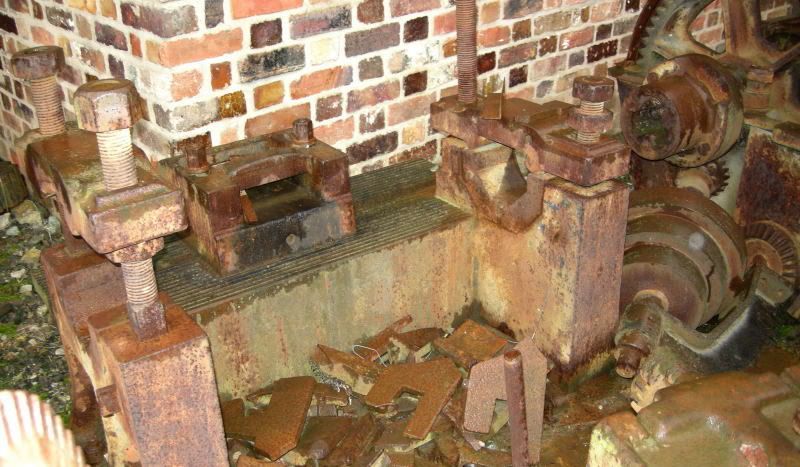Hello folks,
I have been reading with great interest,the present thread on roll turning lathes, I am inclined to muse upon the one liner from that great icon of the American cinema industry, the late Mae West, who upon entering a room during a function was alleged to have exclaimed " Thats sure what i like wall to wall men" Well i can only say the same of that tremendous Mesta corporation photograph Much more interesting than Maes experience, "Wall to wall lathes!" What more can a man ask, What a wonderful corporation Mesta must have been
Up until approx 1960, in the Lanarkshire Scotland steel and iron area, there were still some small rolling mills, that used a much smaller type of roll than the norm, unlike places such as Dalzell steel works of messrs Colvilles Ltd., who had the biggest plate mill in the world in its day 98" wide.
However back to the small mills, there were Messrs Williamsons of Wishaw, whose plate mill was driven by a 1000 hp Boulton & Watt beam engine, second hand, from Ocker hill in the black country, Another two establishments which spring to mind, was Milnwood Steel & Iron Co, at Mossend, a small merchant mill driven by a twin horizontal steam engine, built by Messrs Strathearn Murray & Paterson Coatbank Engine works Coatbridge, And also in the Coatbridge area, was the electrically driven mills owned by
The Waverley & Northburn Steel Co ( fairly large outfit) & Hugh Martin & Co of Dundyvan (also a merchant mill)a small mill
The last two of these concerns, along with Williamsons made their own rolls, in fact in its day Williamsons cast their rolls in their own foundry, the metal being melted in a small air furnace, of about 10 ton capacity, this in its day gave them the facility to remelt broken rolls
In his posting Mike asks about the Aluminium like colour, When you machine chilled iron you get a light silvery grey like sheen even the very look of it is to the average turner " unfriendly"
In the old Waverley works, and in Martins, i remember seeing some of the old "traditional" roll lathes" these were most primitive and interesting, The Martins lathes were by our old friends Murray & Paterson, Who were in a small way a miniature of Mesta ( only about 150 men though) Would build anything for the iron & steel industry in a smaller scale size.
The old lathes at Martins comprised only a tee slotted bedplate, as a lathe bed, a sub table to hold the tools known as a piano rest, another deep rest for necking down, and as for the headstock it was only a set of gears in a frame, the mandrel driving the roll to be turned by a wobbler, As for holding the rolls during machining, this was the procedure (from 30 years of memory)
The end of the rolls were centred on a horizontal drill, and a "bomb proof" tailstock, was set up, In the mandrel was set a headstock centre, Tailstock ditto
The roll bearings were turned and then the tailstock removed and primitive housings were fitted to the bed for overall turning( the wobbler providing the drive), With the roll turning in its housing or steady thingys, great accuracy could be guaranteed as regards concentricity between the bearings and the main portion of the roll All of the toolwork was more or less a scraping process, and as regards the finish and accuracy only obtained by callipers!, it was amazing, A roll turner was a highly skilled craftsman
On the bigger rolls up until about 10 years ago in Coatbridge was the big roll foundry and machine shop of R.B. Tennant, capable of making a roll in excess of 100 tons Many of these rolls were in hard cast iron, In their Meadow works were very modern lathes by the german firm of Waldrich Seigen, real monsters, very powerful and precise machines more akin to a conventional lathe, Usual 4 jaw chuck and conventional tailstock, And for the finishing of the huge rolls for sheet and plate Etc. the finish was obtained by precision grinding In a plant of such modernity & magnitude, there was no place for callipers, and cluncking things with a hammer
Over at Clydesdale tube works, the pilger rolls were turned on big German Becker lathes, very powerfully being able to profile the offset weird roll formation in the hard steel used for these items This type of lathe used cams and hydraulics to the slides
Asquith mentions steam driven roll lathes these would no doubt be built by Messrs Thomas Perry & Sons of Bilston a very prominent maker of such items of plant.



